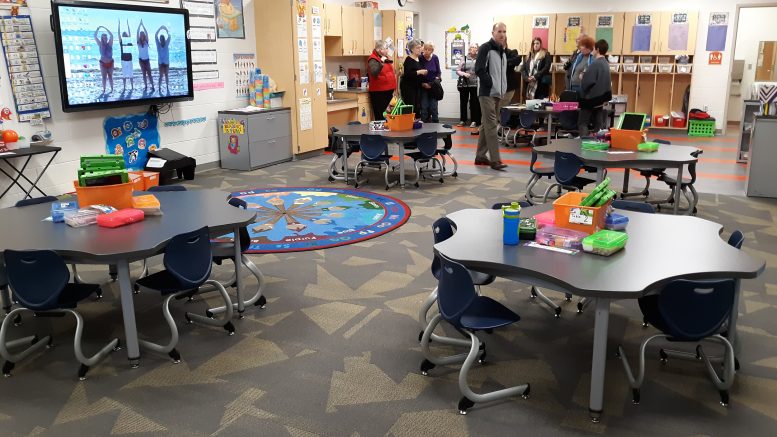By JAN LARSON McLAUGHLIN
BG Independent News
After spending hours touring Bowling Green’s aging elementaries, facility task force members got a glimpse of the future – at least the future for Northwood School District.
Task force members had asked to see an example of new school construction. So on Wednesday evening, they gathered in the newly constructed school that serves pre-kindergarten through seniors in Northwood.
The first question posed to Northwood Superintendent Jason Kozina was about the public reaction to losing their neighborhood elementaries. Kozina acknowledged the loss of the old buildings was a sore spot with some.
“I’ve been through it all – the contentious meetings,” Kozina said.
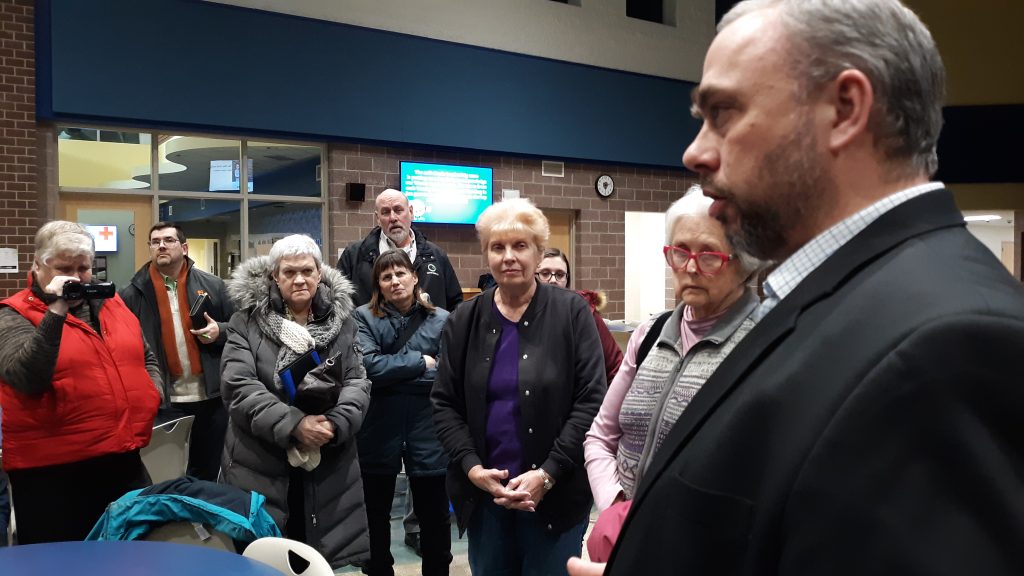
But in the end, the citizens decided that a new centralized school was best for the students.
“Financially, it just had to happen that way,” the superintendent said.
“It’s a million times better than what we had before.”
There are, however, some major difference between Northwood and Bowling Green. First, the state funded 40 percent of Northwood’s new school – as compared to 17 percent for Bowling Green.
Second, the state funding was available to Northwood, whereas Bowling Green would have to wait at least 10 years for it.
And third, Northwood’s entire district has about 1,000 students, compared to Bowling Green having more than that just in its elementaries.
Kozina said there were also concerns initially about one building holding students ranging from 4 to 18 years old. But the older students are on the second floor, and the younger ones on the first floor. They meet only in planned situations such as the older kids mentoring or reading to the younger ones.
“The high school kids are better behaved around the little ones,” Kozina said. “We’ve seen the success with it.”
Throughout the two-hour tour, the task force members had no difficulty pointing out the differences in the new building and Bowling Green schools.
There was room for student movement, team teaching and shared resources in “pod” learning areas. Some of the walls moved – and all of the furniture moved.
“Everything in here is on wheels so you can push it out of the way,” Kozina said.
On the downside, it was pointed out that the moveable walls do not provide as much protection as the block walls. And some task force members disliked the loss of a large library in exchange for smaller pod libraries.
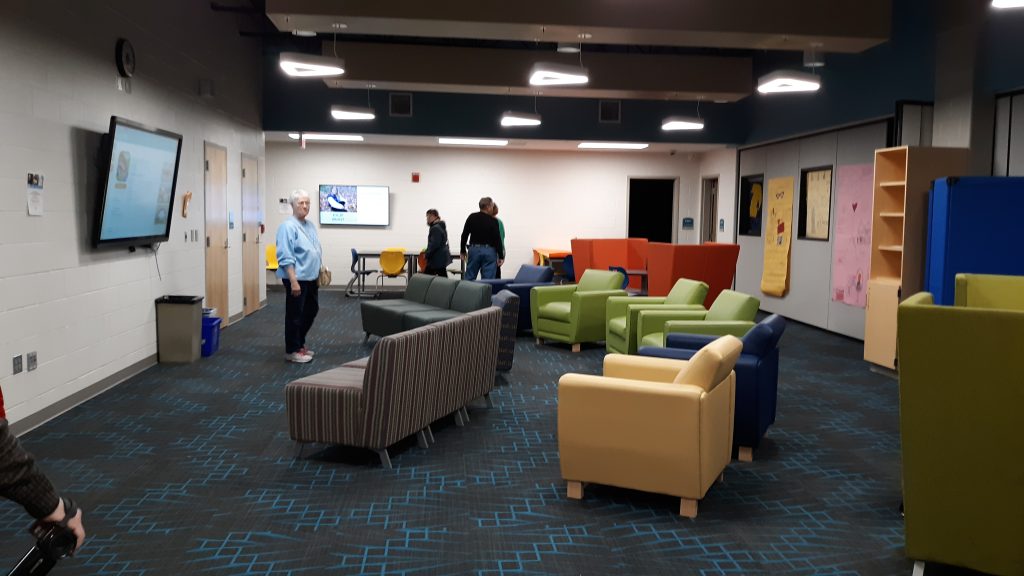
There were classrooms with tiered seating, intended to help students who just can’t sit still in traditional chairs. There were cushy chairs – which the older kids love, Kozina said.
There was space for teachers to meet. There was space dedicated to storage.
“Our old building, we used to see stuff piled up on everything,” Kozina said.
The classrooms for the youngest students have their own restrooms. Except for the restrooms by the gym, all the others are individual unisex bathrooms.
“The kids love it. The cleaners hate it,” Kozina said. But as gender identity becomes an issue in schools, Northwood wanted to be ready and accepting.
Some were quick to point out specific differences. The school nurse has an actual office and room to treat students – as opposed to Kenwood Elementary where the nurse shares a cramped storeroom with the physical education teacher.
There was a music room – as opposed to the cart pushed from room to room for music class at Conneaut Elementary.
There was space for teachers to eat in a staff room – rather than in their classrooms at Crim Elementary.
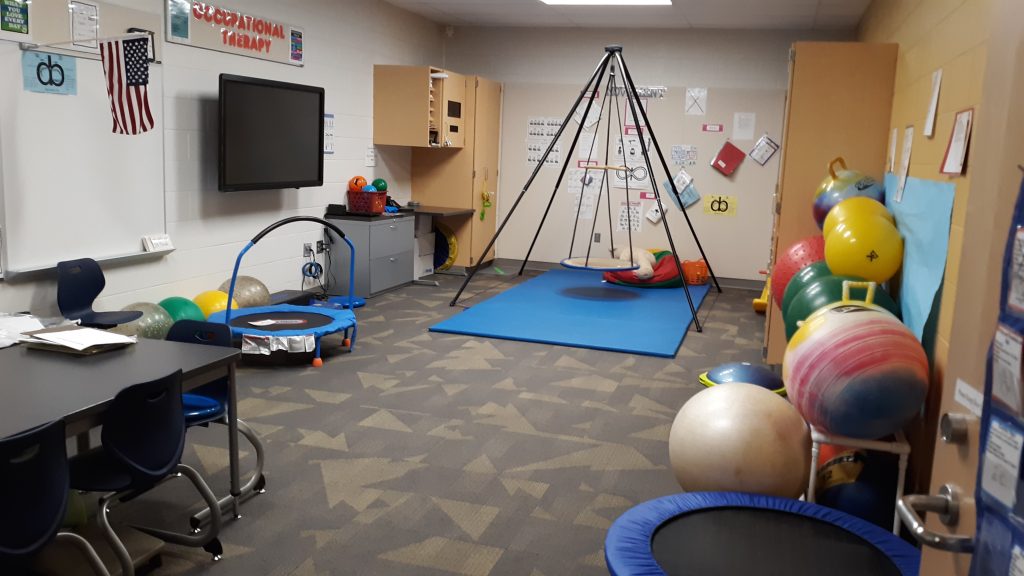
And there was a room specifically for students who learn best through sensory programs. “This is much better than on the stage,” one task force member said, referring to the sensory space at Conneaut on the gym stage.
The HVAC system in the school has created an environment more conducive to learning, Kozina said.
“We don’t have to close when it’s hot. We don’t have to worry when it’s cold,” he said.
In their older schools, when it was 90 degrees outside, it could be 97 inside. And when it was freezing outside, the heat inside was inconsistent.
The superintendent pointed out the technological advantages in the school. There are more than 100 cameras in the building, including one in every classroom. All the lighting is LED and operates on motion sensors. Every room has a 70-inch “clever touchboard” TV.
“They are amazing machines,” Kozina said.
The pod learning areas are equipped with microphones for teachers, so “there’s a lot less yelling.”
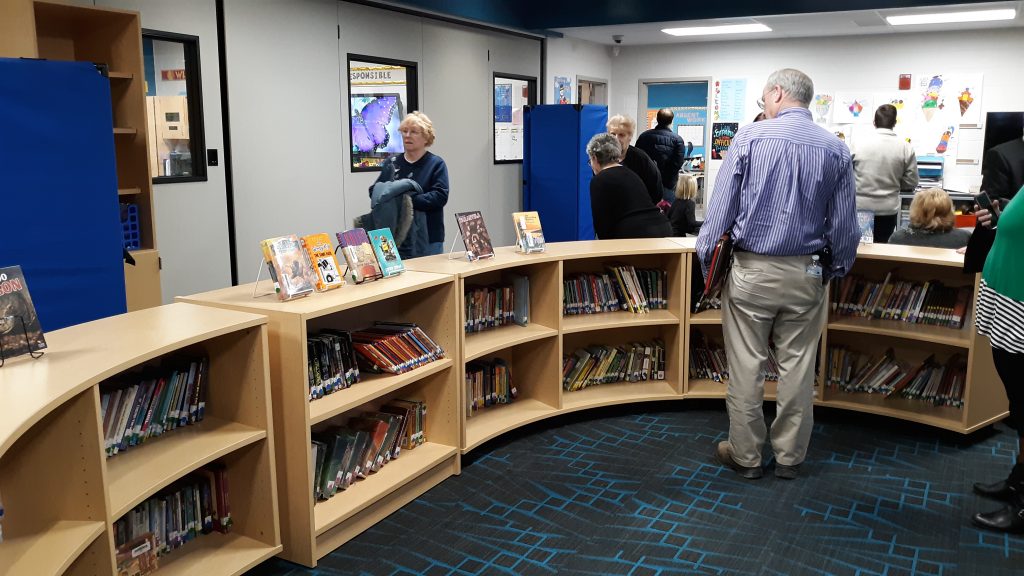
Cameras in some classrooms can zero in on the teacher’s demonstration of a science dissection or a kitchen skill, then enlarge it on a screen so everyone in the class has a close-up view.
The district provides all the students, kindergarten through seniors, with an IPad.
It took a little over two years to build the new school. No swing space was required, since students continued attending the old buildings till the new one was ready.
To fund the local 60 percent share of the building, the district passed an earned income tax and a property tax bond issue.
As soon as the tax issues passed on the ballot, the school architects started meeting with the teachers – who played a major role in designing the school and picking out their furnishings, Kozina said.
“We believed the teachers were integral in making that all work,” he said. “Our belief was, we needed everyone to have a voice.”
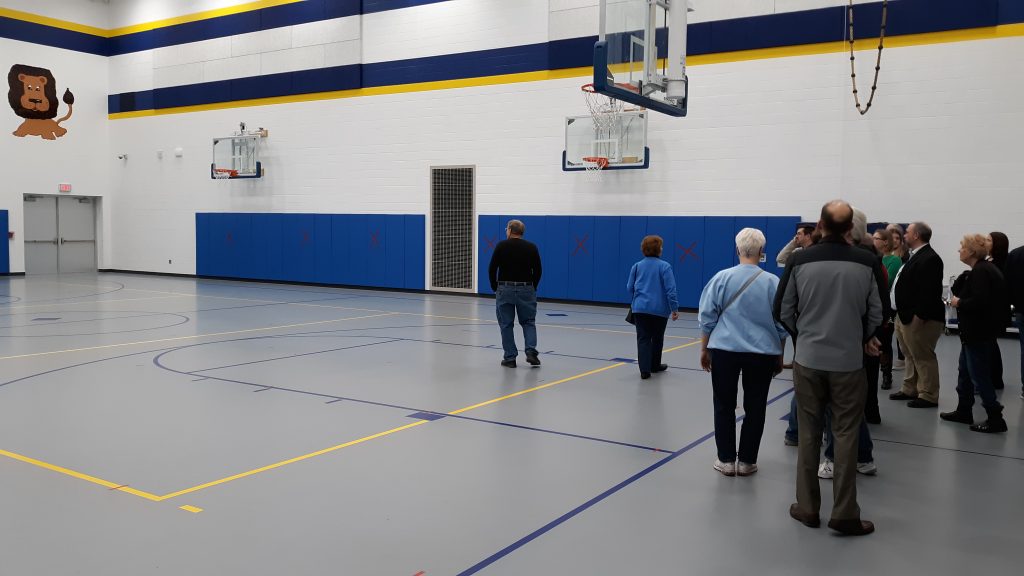
Kozina pointed out that the district did have to spend extra money on items that went beyond the state’s funding – such as an enlarged gym.
The school district continues to use its auditorium in the old high school building next to the new school. New auditoriums – similar to Bowling Green’s – cannot be built with state funding, he said.

